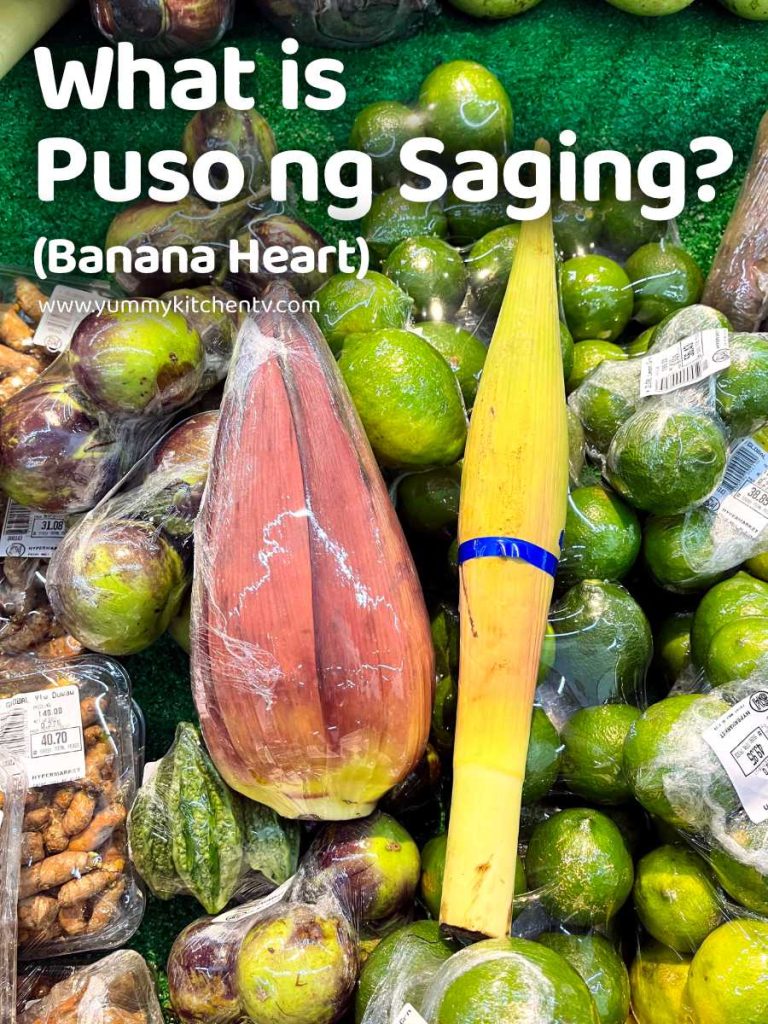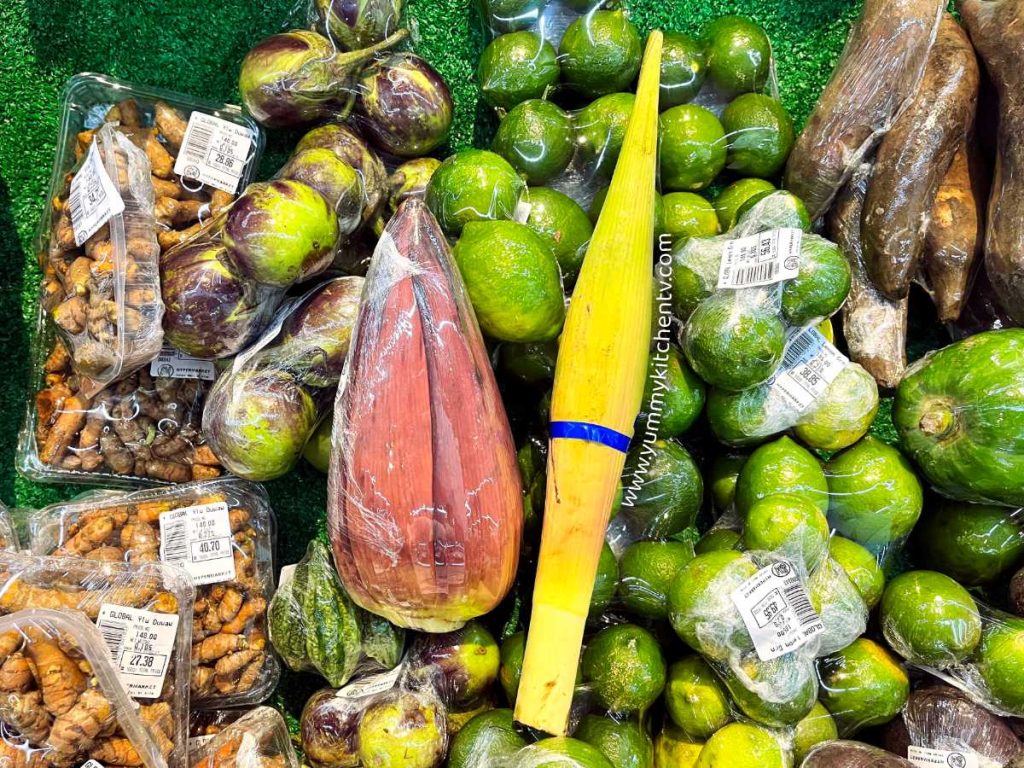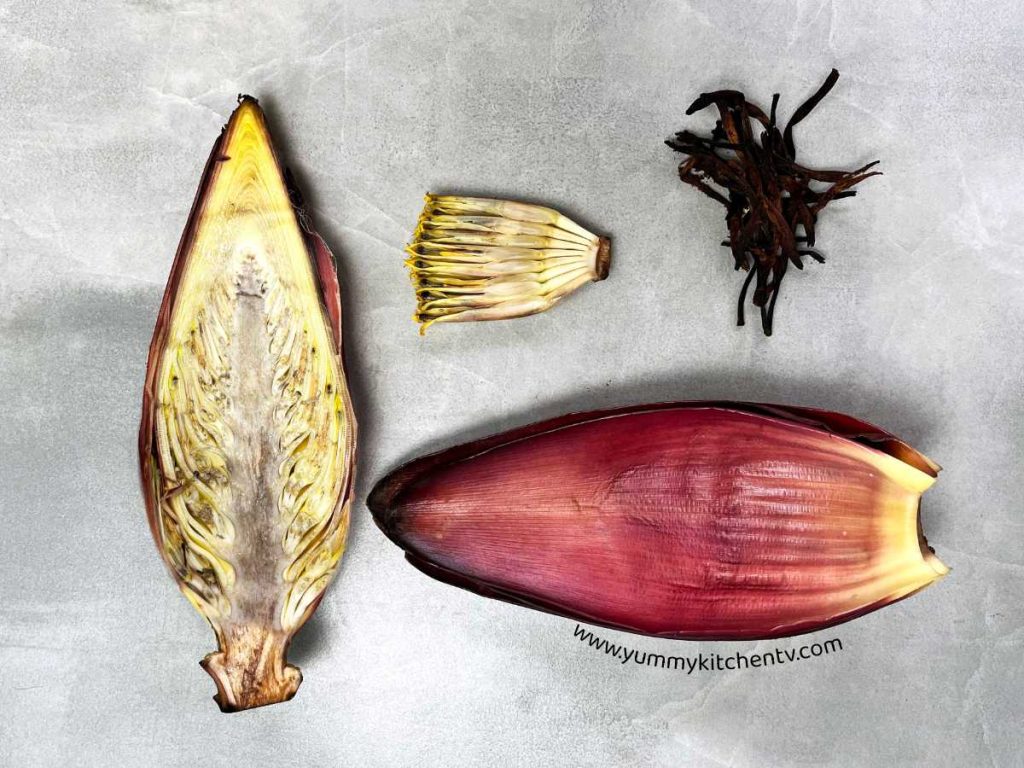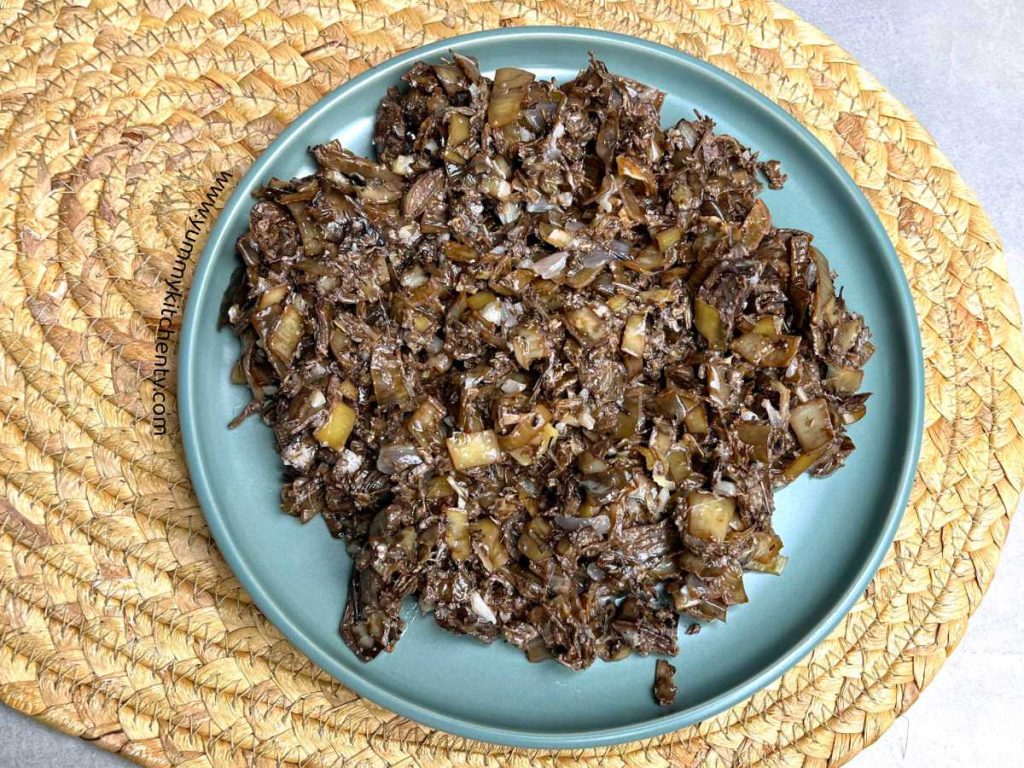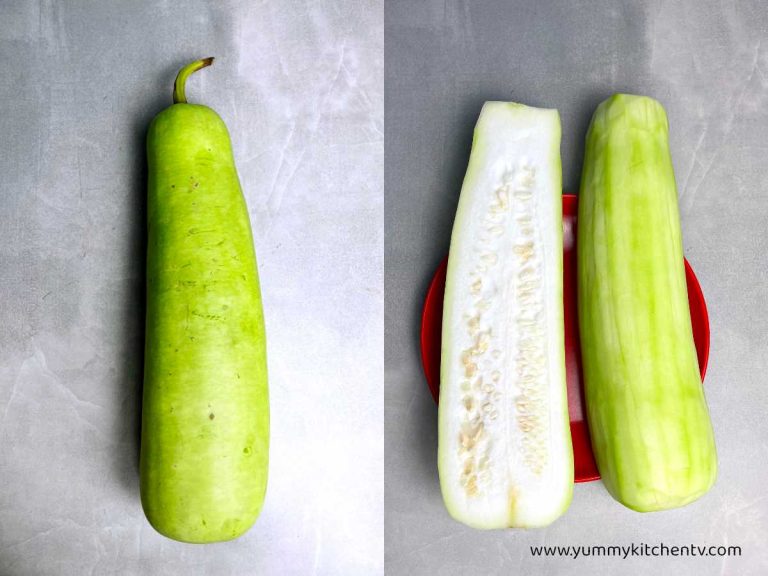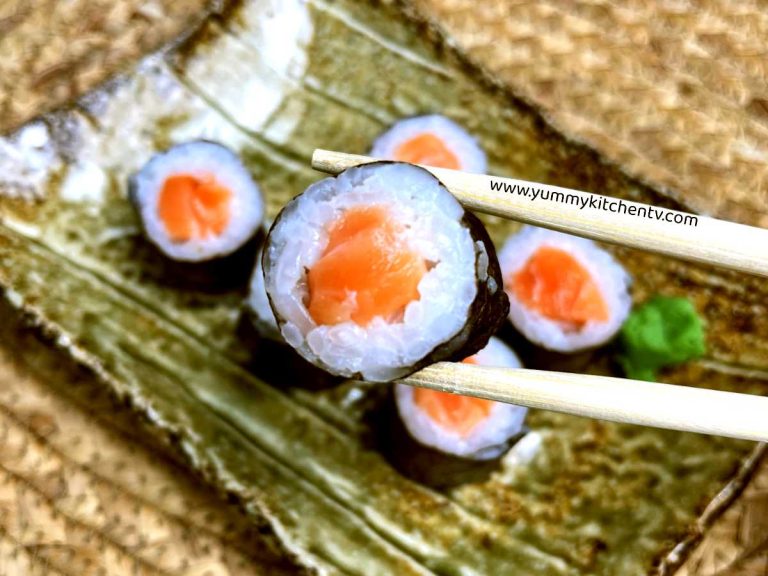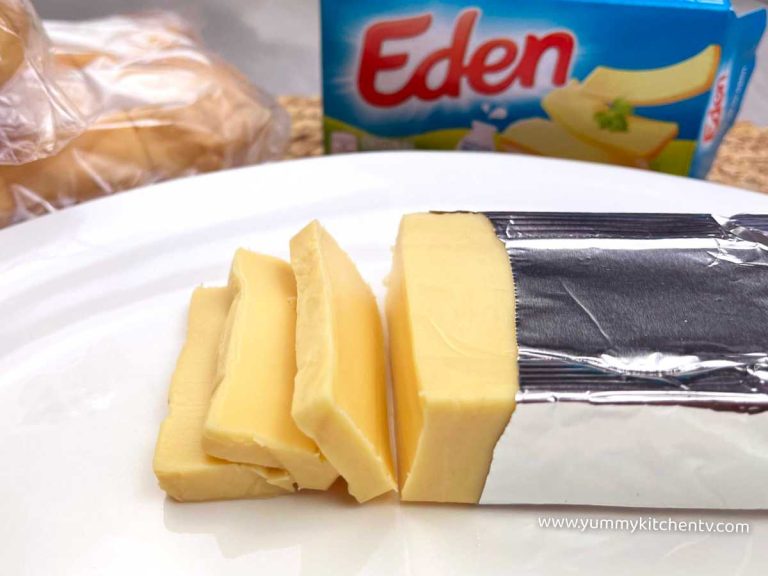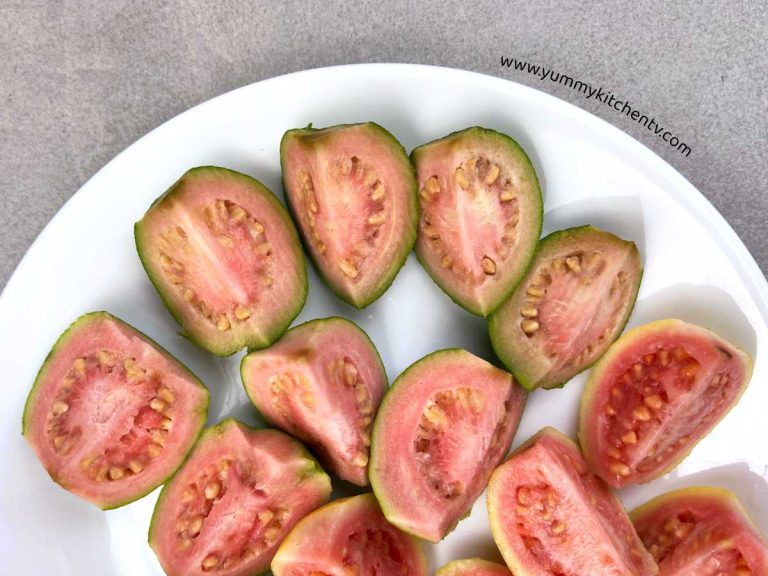Puso ng Saging
Puso ng Saging or what many may know as “Banana Heart” is not a common ingredient found or used in Asian cuisine, especially Filipino cuisine. These are an edible, fibrous, and very healthy ingredient with a slight earthy taste. Found fresh at groceries or dry markets, canned in brine or water, or cleaned then sliced and packaged to be frozen. Bought by many due to its many health benefits and the banana heart being very versatile and affordable with different parts of the heart or ‘flowers’ that can be separated and cooked differently. From traditional Filipino dishes, to raw salads, stir-fry, and numerous savory recipes, especially found stewed with coconut milk or cream, and more recently used as a meat alternative (for vegan meat) dishes. An underrated ingredient that has a lot of potential. Read more about the Banana heart down below.
A Brief History
Literally the heart of a banana tree, found in the middle of the banana cluster. These are large purple looking buds with many layers, resembling an artichoke where you would need to peel the ‘petals’ to find the hidden silky heart in the middle. The small flowers found in between the petals are called ‘banana blossoms, and are the flowers that will soon turn into the banana. A bit starchy and neutral in taste, no banana flavor whatsoever, making them versatile and easy to flavor. It’s cooked by removing the purple petals while keeping the small flowers to the side to be used (most of the times the pistil in the middle is removed), then one you get into the middle where the flesh is more soft, these are sliced to medium or smaller pieces to be cooked or added into omelets, stews, or many other dishes, with or without the flowers.
Cultivated by Southeast Asians, the Indo Burma region being the center origin of the banana. Malaysia prepares the blossoms to be cooked into curry, Philippines and Indonesia simmer the flowers in coconut milk, and savory spices, serving it as a main dish. Banana Blossoms can be eaten raw, added into salads, cooked in stir-fries, soups, or noodles. Recently it has amassed a good following of vegans who have used this banana heart as a substitute to fish due to being fibrous but very soft and tender without being mushy.
Guide to Cleaning Banana Blossoms
How to clean puso ng saging? To use this flowering plant, you’ll need to unwrap the layers, like unwrapping a gift. Peeling the inedible purple layers till you get to the pale yellow heart (core). In between the purple leaves are the coveted small vertical flowers. These while very interesting in taste and texture are a bit of a pain to clean and prepare. But it will all be worth it once you find yourself taking a spoonful of luscious goodness.
- Optional: With a knife, slice a lemon, or cover the knife with a tablespoon of vinegar or any available citrus. Making sure to glide it all over the metal part and chopping board. This helps keep it from the sticky liquids that come out of the banana blossom. Makes it easier to clean as well.
- Prepare a bowl of water, and squeeze half of the citrus or some vinegar in. This will help avoid discoloration of the flowers and the flesh. Set aside.
- Peel the purple petals and take the flowers surrounding the next layers.
- Take the flowers, individually removing the pistil or ‘style’ (the middle sticky knob), and calyx (the translucent outermost petal, NOT the piece where there is a yellow like flower above). Repeat for all the flowers.
- Place the cleaned flowers in the bowl of citrus water.
- To store, strain and place this in a Zip lock bag or airtight container. Kept in the freezer for almost 2 weeks to a month.
- When serving, if you’d like, use the petals as serving plates, or decoration for the final dish.
Puso ng Saging Benefits
Puso ng Saging calories for 100 grams of serving is around 100 grams. A far less common ingredient, banana flower is considered a delicacy as well as medicine in outer cultures.
- It possesses ethanol, which helps cure infections and avoid bacterial growth.
- Rich in potassium, fiber, Vitamin A, C, and E, great for weight loss, and gastrointestinal health.
- Reduces Anxiety and improves mood, similar to an antidepressant without side effects.
- Reduces free radicals with traits cancer and premature aging.
- Banana flower extract can help prevent growth of malaria parasites.
- When boiled by itself, it can help diabetes patients lower blood sugar and helps in red blood cell production.
- For mothers who need to increase breast milk supply, and maintain a healthy uterus. This also helps with constipation during pregnancy.
Puso ng Saging recipes:
How to cook ‘Puso ng Saging’ in English ‘Banana Heart’? Though unusual, are highly nutritious and are neutral in flavor, making it easy to mix into different recipes such as:
- Ginataang Puso ng Saging, a vegan Filipino dish made of sliced banana heart, coconut cream or milk, sometimes adding meats like seafood or pork, with a mix of chillies for an extra kick.
- Puso ng Saging Patty (also called puso ng saging recipe burger), for those who love burgers but are looking for a vegan alternative.
- Banana blossom balls, a cheesy snack, great for introducing this ingredient to kids.
- Pork Humba, a deliciously sweet, savory, flavor packed and juicy pork dish that will make you salivate in delight.
- Coconut shrimp with Banana blossoms, a yummy seafood simmered with banana flowers. Creamy, savory and delicious.
- Some sauté or stir-fry ideas that you can mix banana hearts with are ‘puso ng saging recipe with sotanghon’ which is stewed banana heart with sotanghon or vermicelli noodles, another quick recipe is ginataang puso ng saging at papaya (which is savory coconut sauce stewed with banana heart and unripe/green papaya).
- Other options to use as a vegetarian alternative are puso ng saging sisig, puso ng saging salad, adobong puso ng saging (a Filipino adobo take on the banana heart), kilawing puso ng saging (raw banana heart cooked with citrus), Ensaladang puso ng saging (similar to being braised in savory coconut milk stew but with more chillies, ginger, and calamansi), or tortang puso ng saging (banana heart egg omelette)
#PusoNgSaging #BananaHeart #FilipinoCuisine #HealthyCooking #PinoyFood #ExoticIngredients #VegetarianDelights #FilipinoDelicacy #PlantBasedCooking #TastyTraditions


